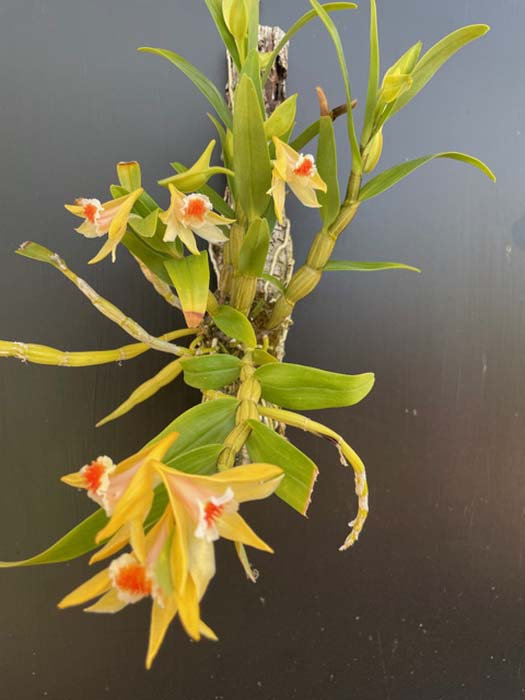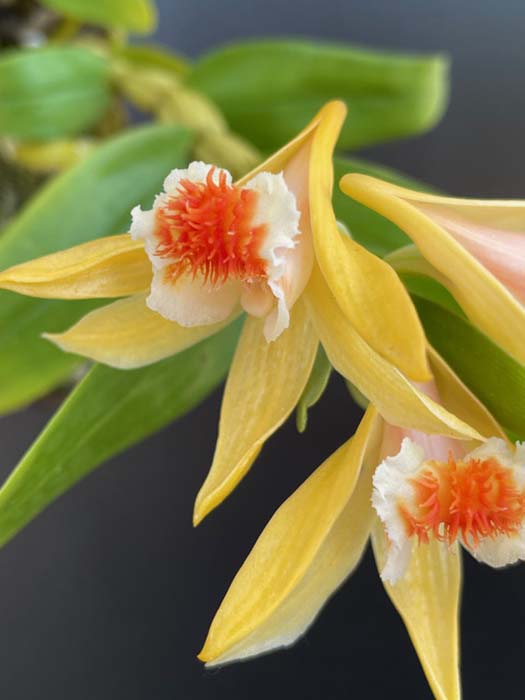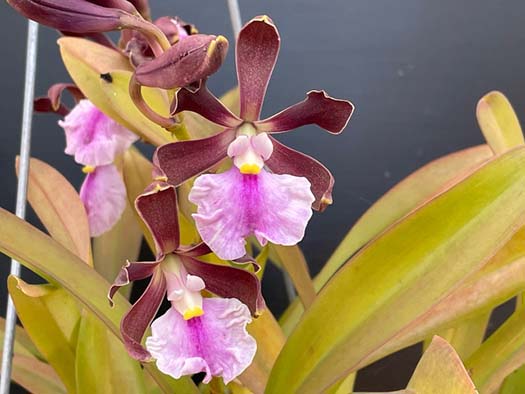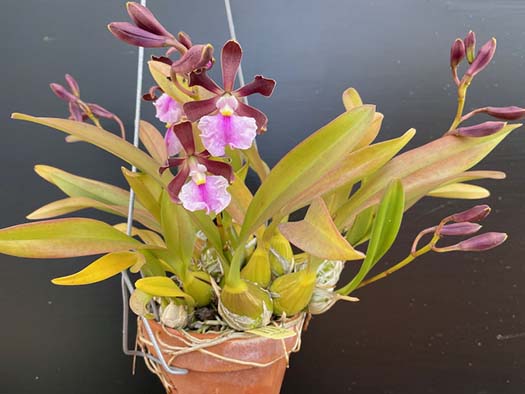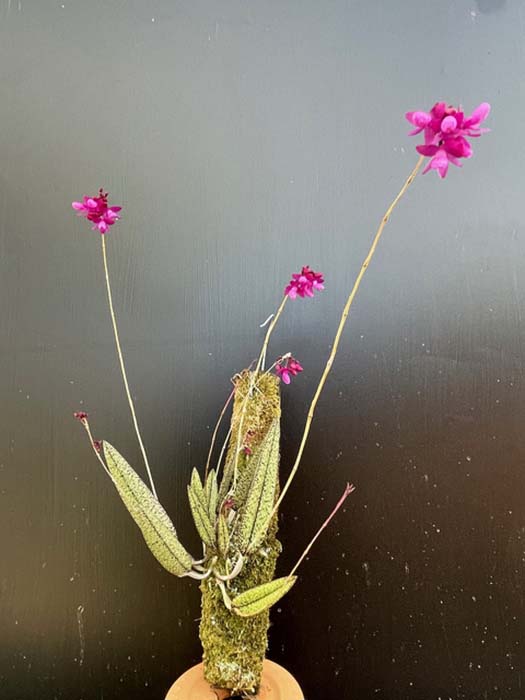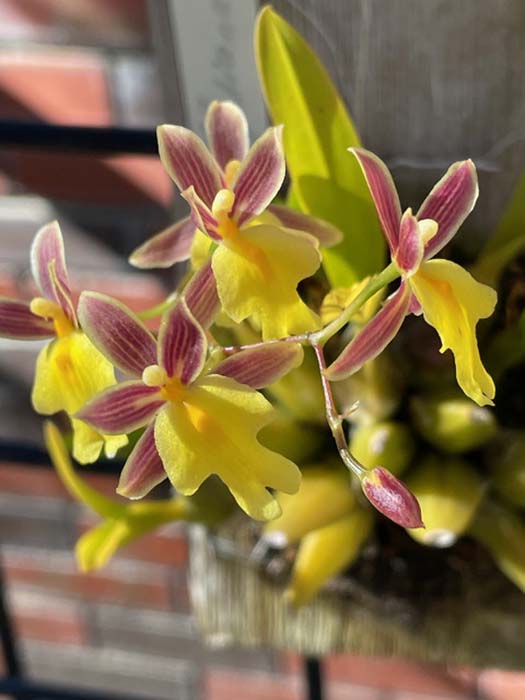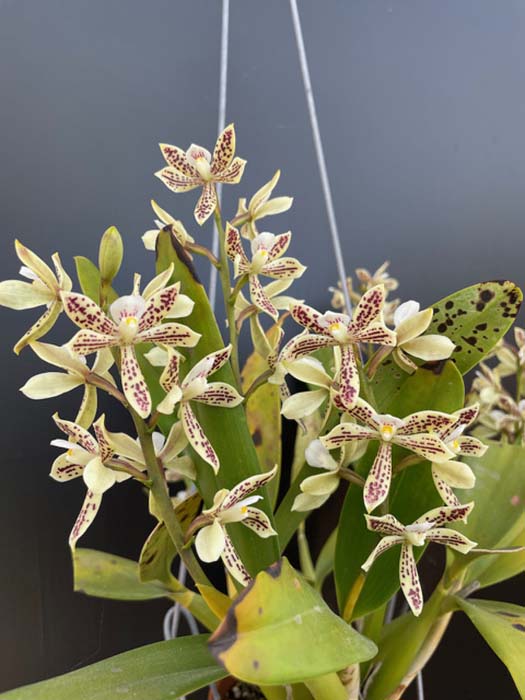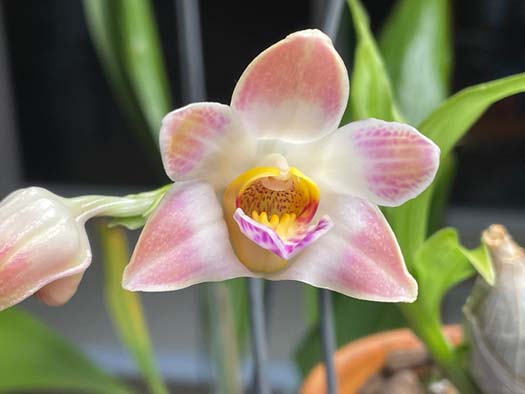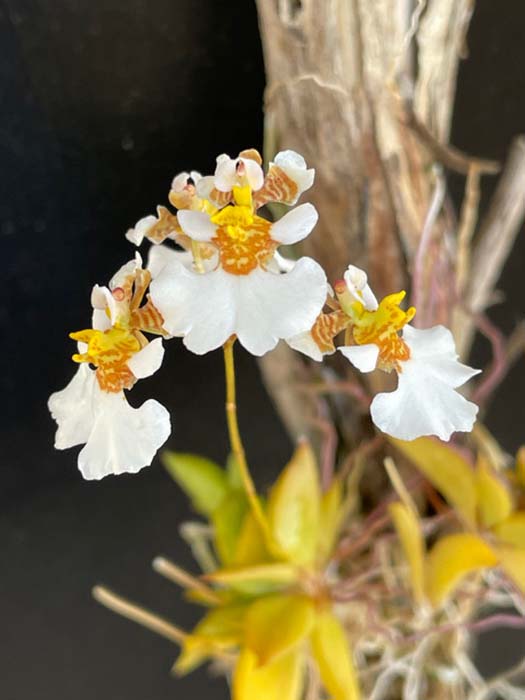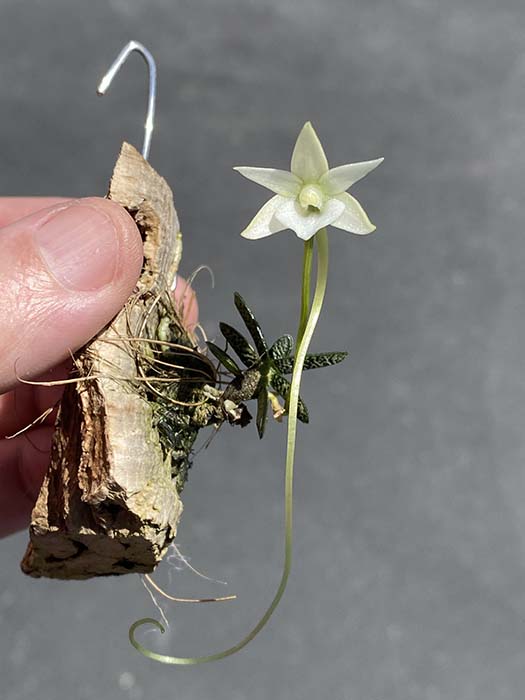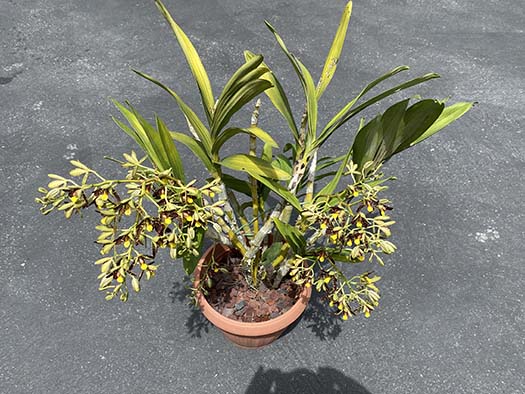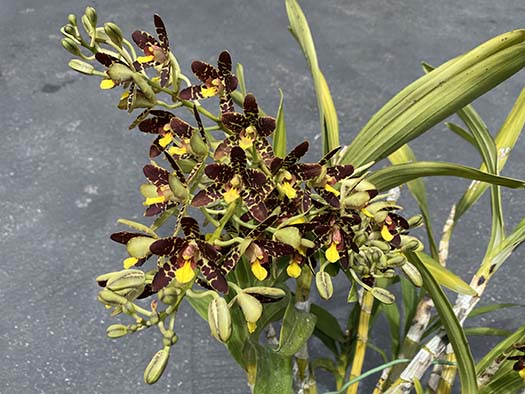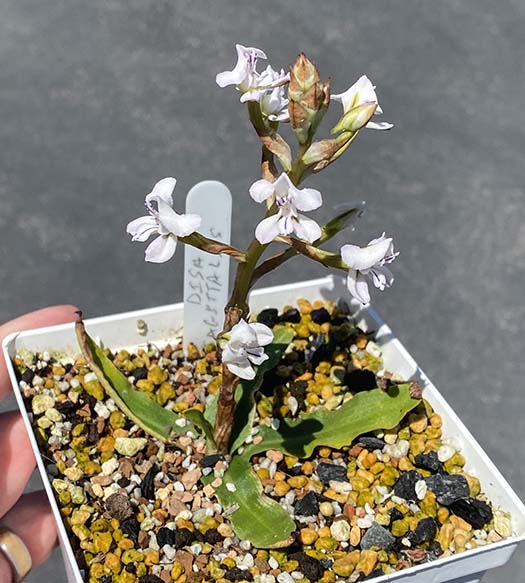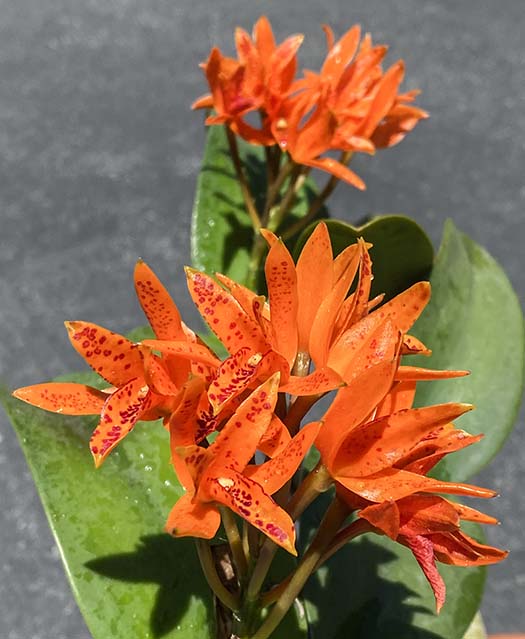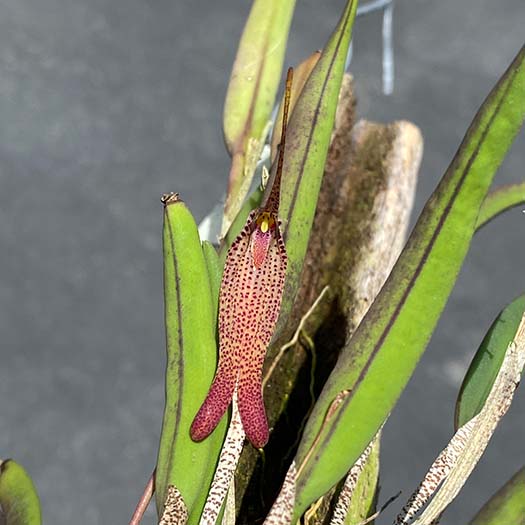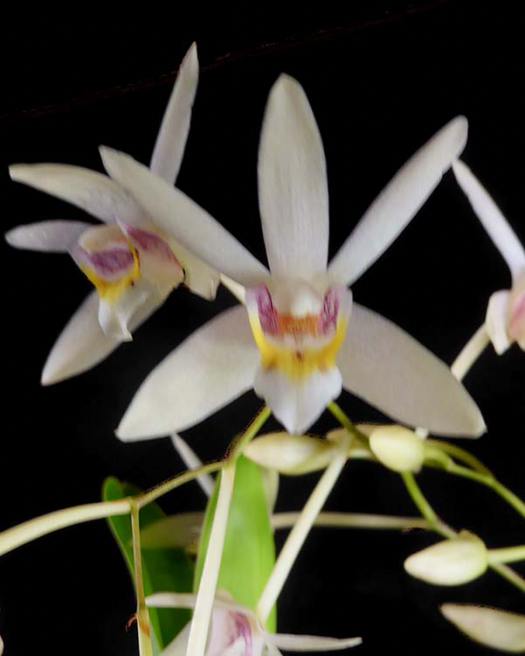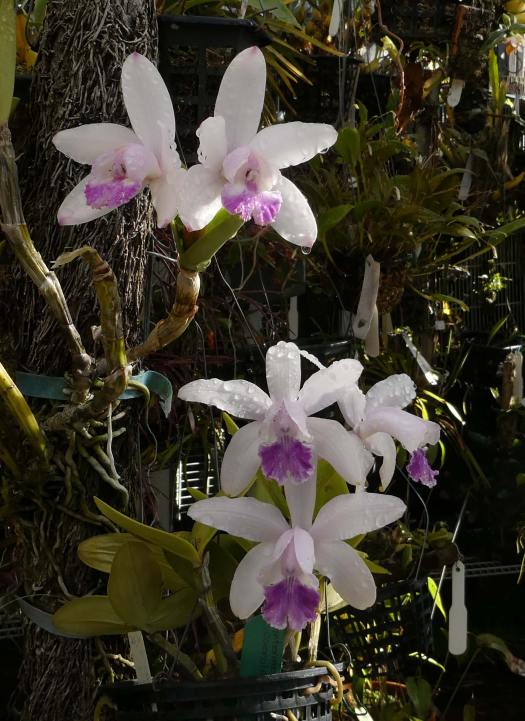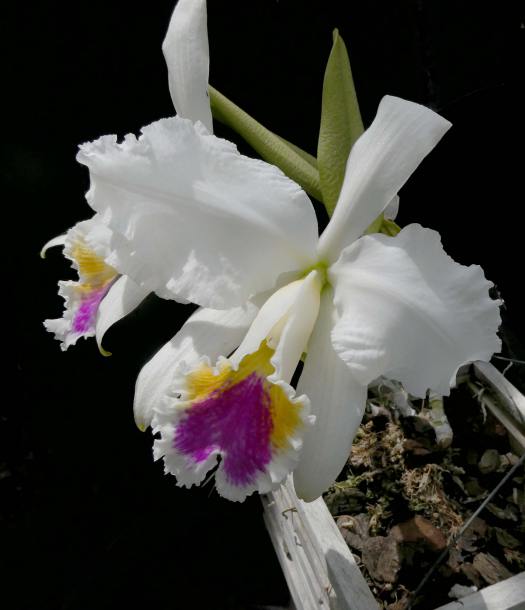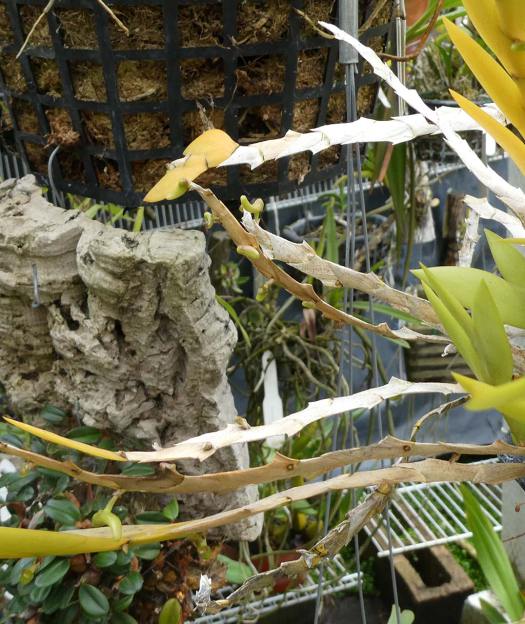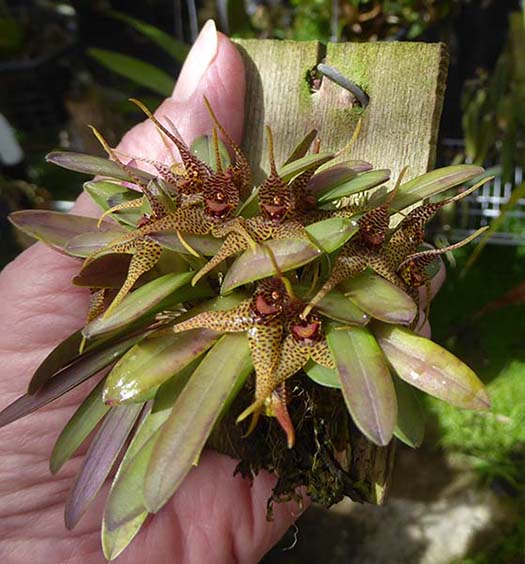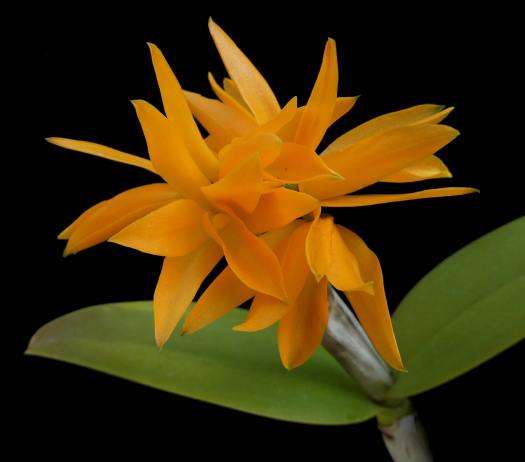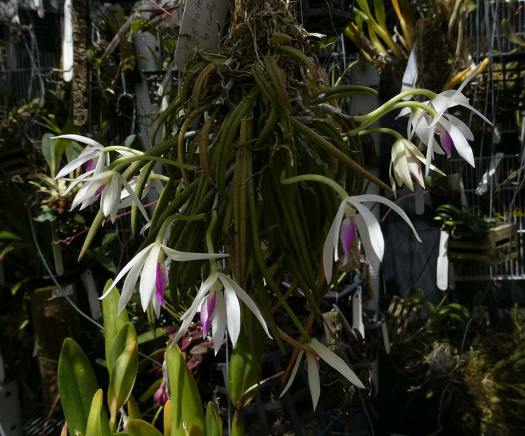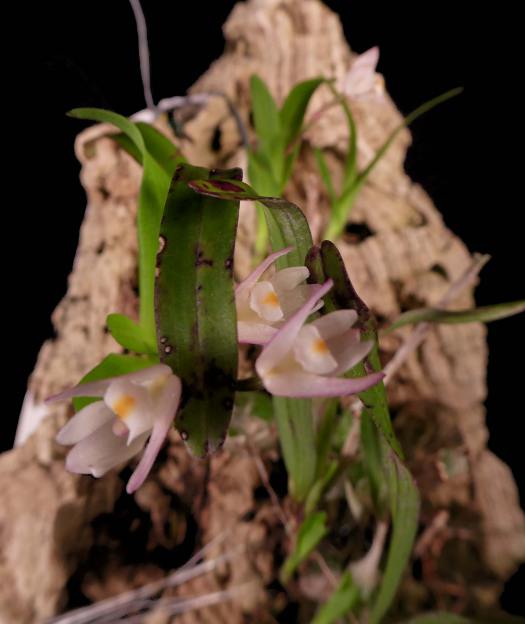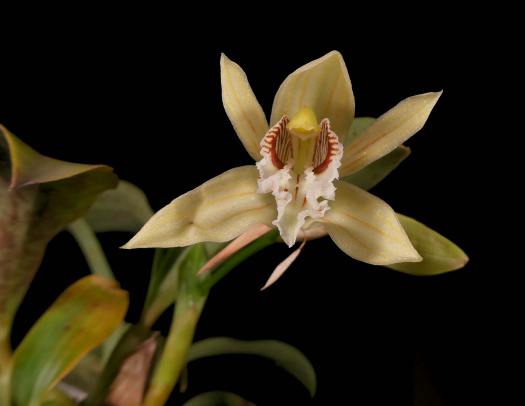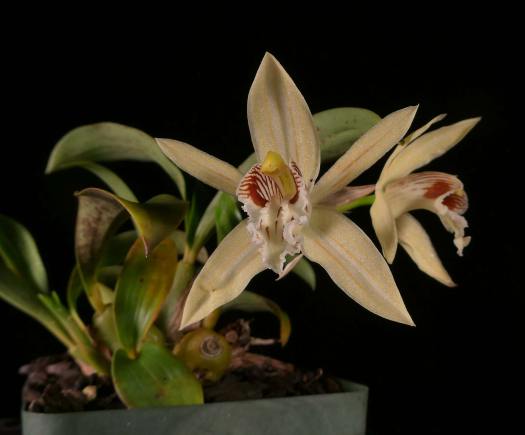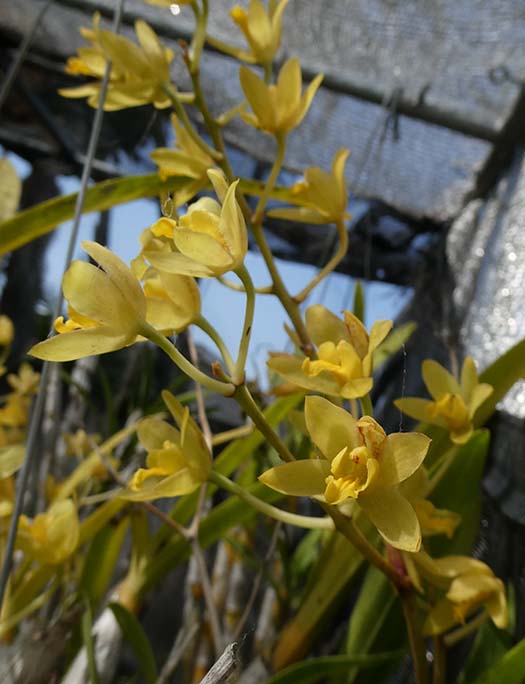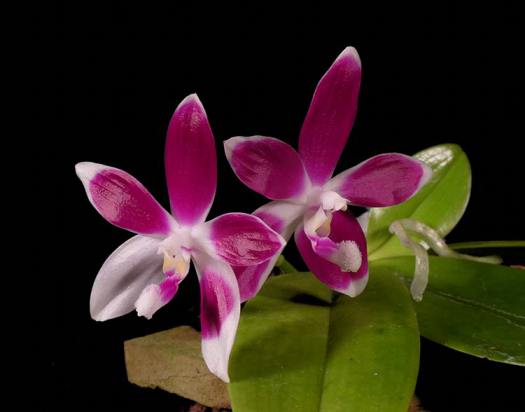May 2022
From Kurt Shanebeck:
|
|
Outdoors coastal, north of Los Angeles: |
|
Dendrobium schrautiiThis is an easy growing Dendrobium that has bloomed quite reliably. It grows mounted under bright light with daily water. The mount is almost completely rotted at this point so I will need to remount soon. |
|
Encyclia cordigeraThis is a plant that is widely regarded as a hot to warm grower. I am not sure why I initially put it outside, but it has proven to be quite robust growing outdoors over the last 3+ years. |
|
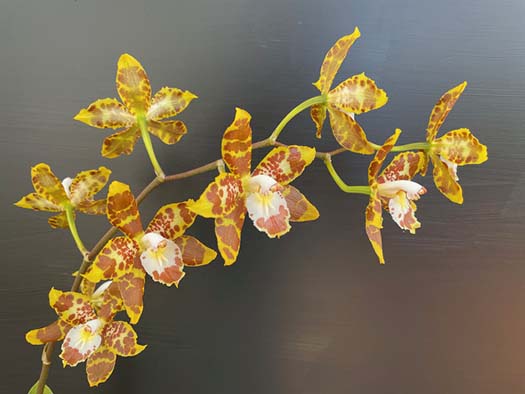
Oncidium spectatissimum (sym. Odontoglossum)Beautiful large flowers (3-4”). I had it growing mounted, but it didn’t seem to be staying moist enough so I put it in a pot where it seems happier (so far). |
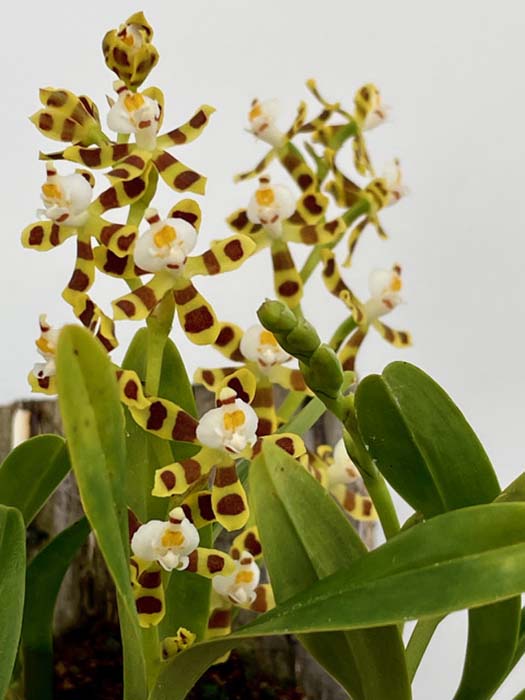
Oncidium tigroides (syn. Solenidiopsis)this is a small Oncidium that like to grow shady and moist. This plant is mounted and produces an eye catching display.
|
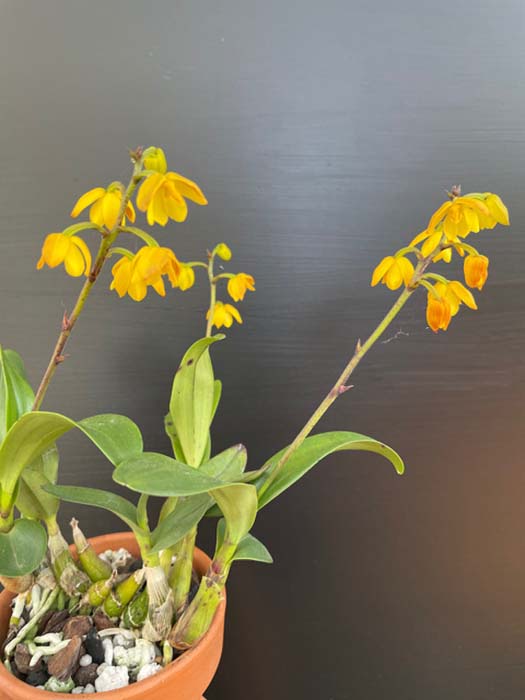 |
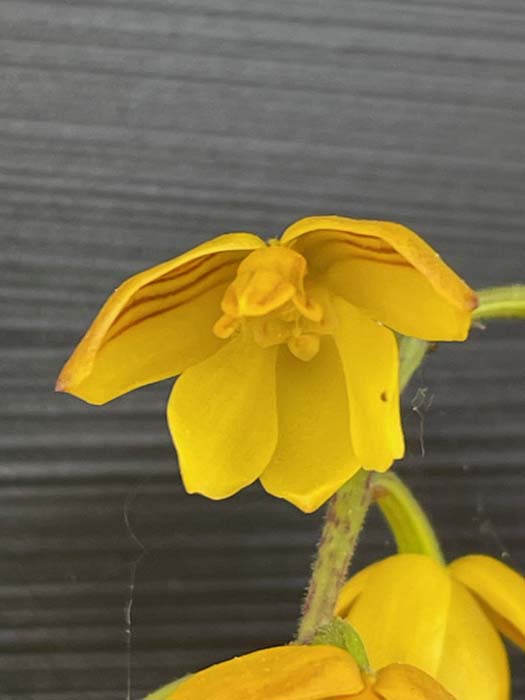 |
Polystachya pubescensSouth African species. Has beautiful markings that are somewhat hard to see since the flowers tend to hang down. Although it is generally an epiphyte I am growing it potted in partial shade. |
|
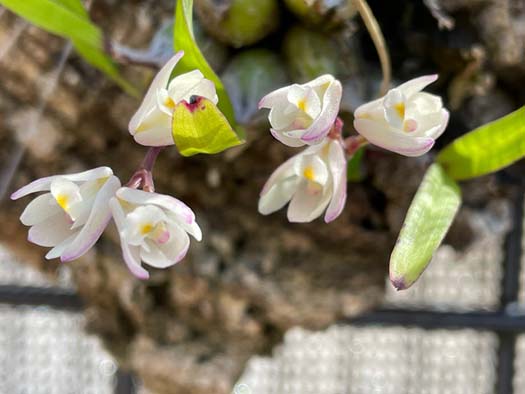
Polystachya ottonianaSmall plant with closely spaced pseudobulbs grwing mounted and shady |
|
Indoors, Under Lights: |
|
From Scott McGregor:All orchids grown outdoors, coastal southern California |
|
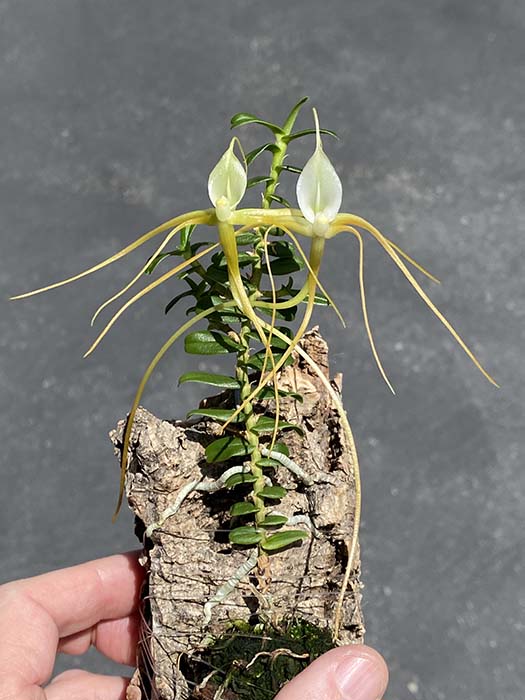
Angraecum arachnitesA creeping mini, with spidery flowers large for the size of the plant. |
Angraecum urschianumOne of the smallest Angraecums, but it makes up for it with a flower bigger than the plant! |
Ansellia africana 'Kenya Dark'Ansellia africana is the perfect outdoor orchid for the patio—it can handle some direct sun, doesn’t mind hot or cold (even a but of frost), and puts out large sprays of fragrant, long-lasting 2-3” yellow and brown flowers on 3’ tall (or more) plants. I grow mine in large pots filled with lava rock and a bit of large orchiata bark, to give the plant lots of space for roots, and for the weight to keep the plant from blowing over in the wind. It is known for creating a basket of roots that protrude upward out of the pot, in order to catch debris and organic matter. |
|
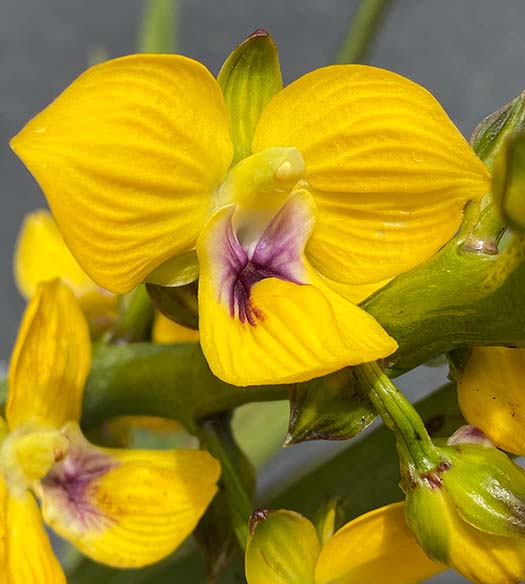
Eulophia speciosaOpening a half-dozen flowers at a time on dense spikes, this sun-loving terrestrial species is in bloom from late Spring until mid-summer. From southern Africa, it prefers sandy soil (or even pure sand), and grows large tubers underground. |
|
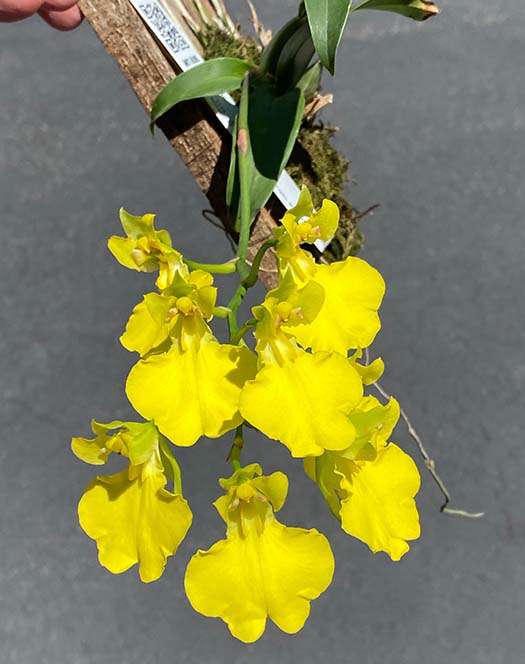
Oncidium (Gomesa) concolorBright 2” pure yellow flowers, small compact plant, and fragrant too! |
|
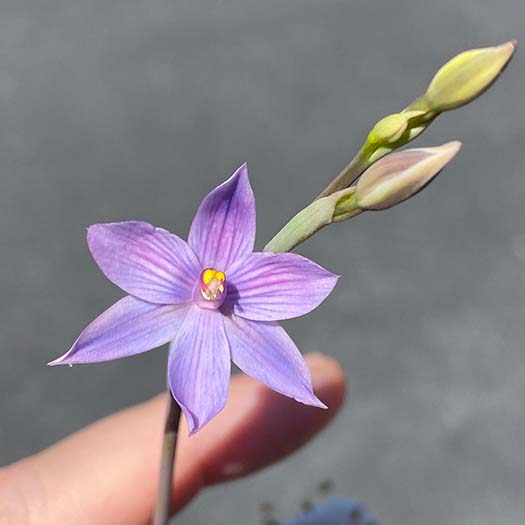
Thelymitra cyaneaThe last of my Thelymitras to bloom, T. cyanea is also called the “swamp sun orchid” or the “veined sun orchid”. It is common across New Zealand as well as Southern Australia. As its name might imply, it needs a bit different culture than other Thely’s as it is only briefly summer dormant (June – August) and needs more water than others. This year it flowered less “blue” than other years, perhaps because the substrate wasn’t sufficiently acidic. |
|
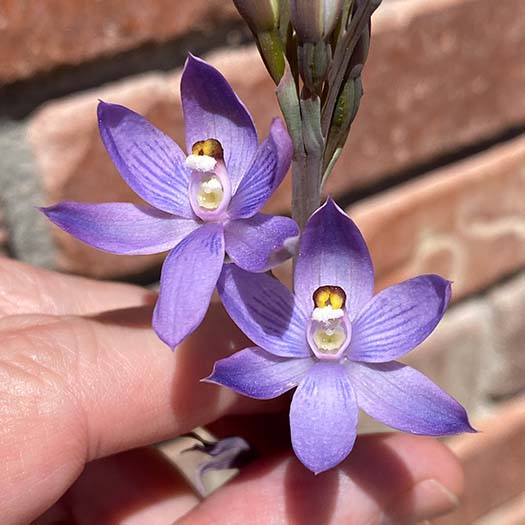 |
Thelymitra dentata x glaucophyllaA primary hybrid. Violet flowers with blue stripes! No color editing—cropped only. |
From Roberta Fox:
|
|
Outside in the Back Yard: |
|
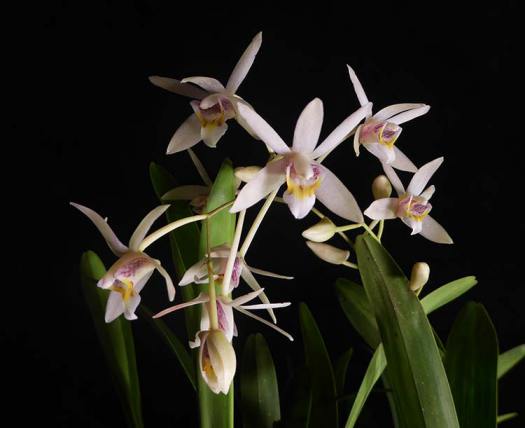 Epigeneium triflorum var. orientaleUsually blooms about twice a year for me, in spring and fall. A high-elevation species from Java. It has a growth habit that tends to ramble - I have it in a plastic basket, and the pseudobulbs are working their way upward. It seems to bloom best once it gets away from any medium. |
|
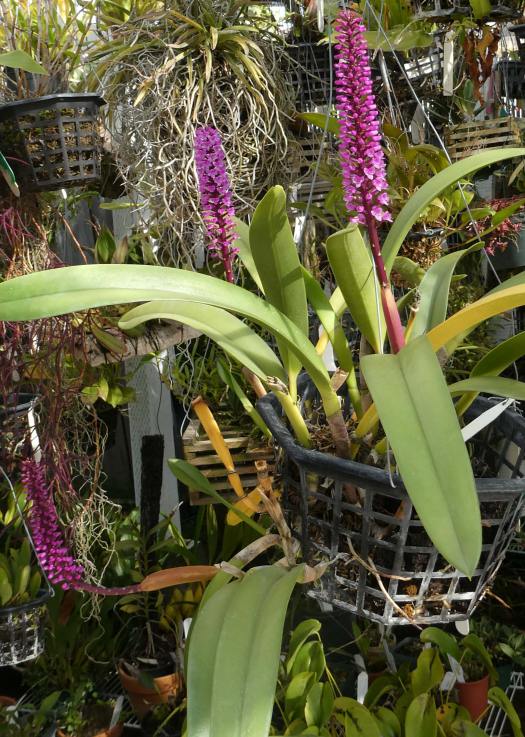 Arpophyllum giganteumNative to Mexico, Central America into South America, at elevations from 350 to 2100 m. The basket has little medium in it, and the plant is growing vey well, in several directions. In years past it has been a hummingbird magnet, but this year I haven't seen much investigation. |
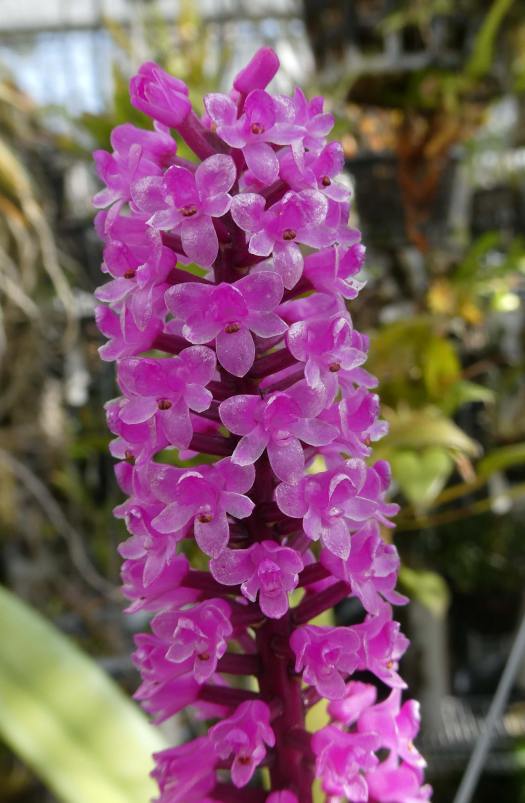 |
Cattleya intermediaf. amethystina top (mounted), f. coerulea bottom (basket). This species has quite a few color forms, and grows easily under backyard conditions with no shelter. Native to Brazil, Paraguay, Uruguay. The peloric form, f. aquinii, is in the background of many splash-petal hybrids. |
|
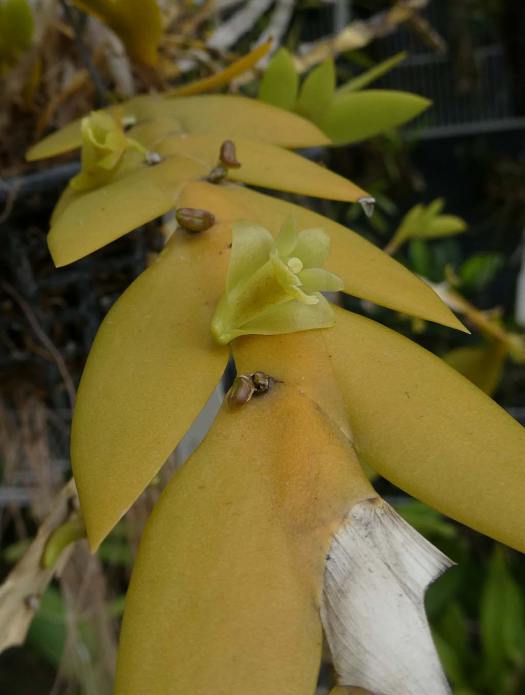 Dendrobium ancepsThis species has succulent leaves arranged along the canes. (The little brown structures are newly-emerging buds) Note that there are buds emerging along leafless canes that look quite dead. A lesson to not cut anything unless it is completely shriveled all the way to the base. The species comes from a range of elevations in the Himalaya foothills of India and southeast Asia. I started out growing it in the greenhouse, but it ended up taking up a lot of room and not blooming very well, so it moved outside. It lost some leaves while it was adjusting, but this is the best blooming that I have had. |
|
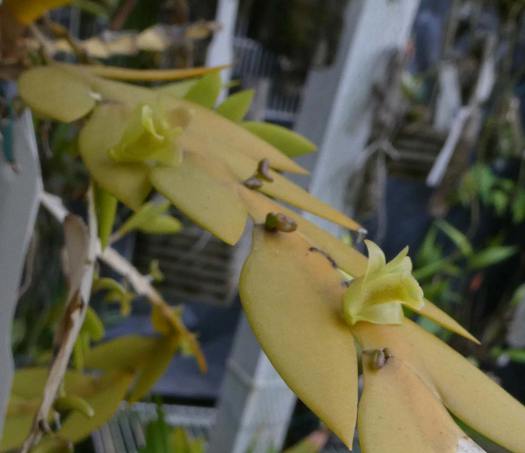 |
|
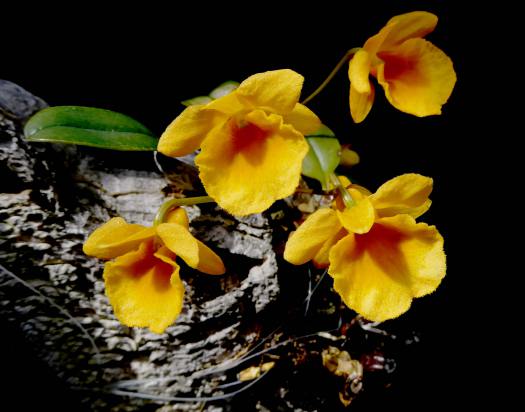 Dendrobium jenkinsiiA bit of sunshine. It's a small plant - leaves are about an inch. It's closely related to Den. lindleyi, but for me it is much easier to bloom. I don't particularly dry it out in winter, but being mounted it dries very rapidly, and that seems, along with cool winter nights, to be sufficient to trigger blooming. |
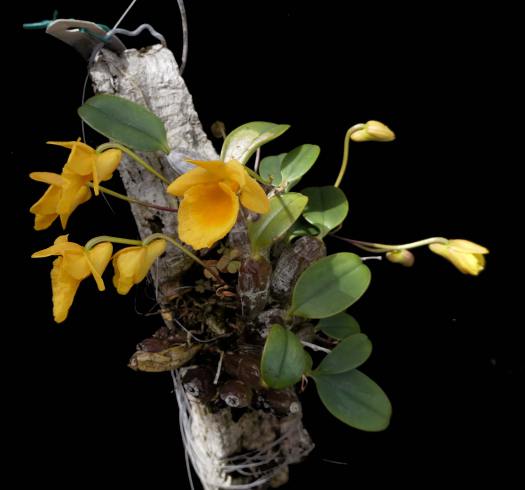 |
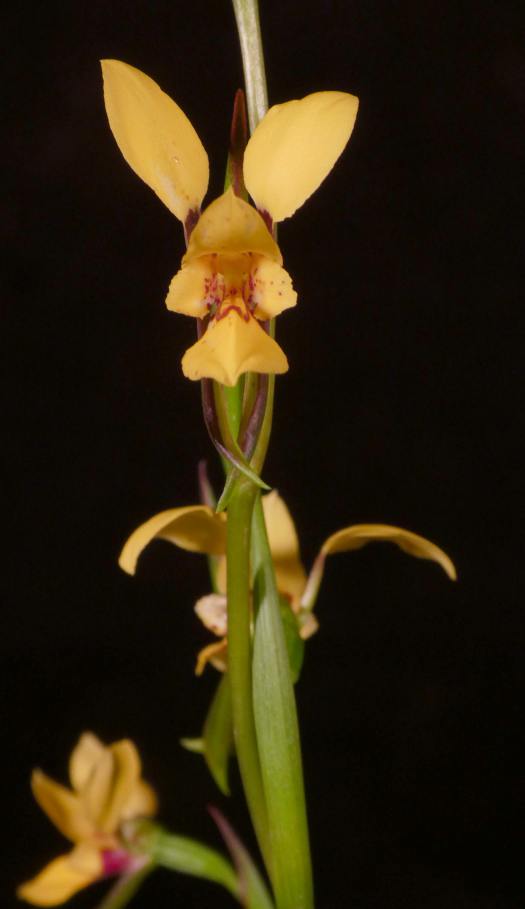
Diuris drummondiiThis "donkey orchid' from Western Australia is the last of my terrestrials to bloom. All of the rest are long since finished and mostly dried up. The grassy leaves are showing signs of dormancy, but it definitely has a later season than its relatives. |
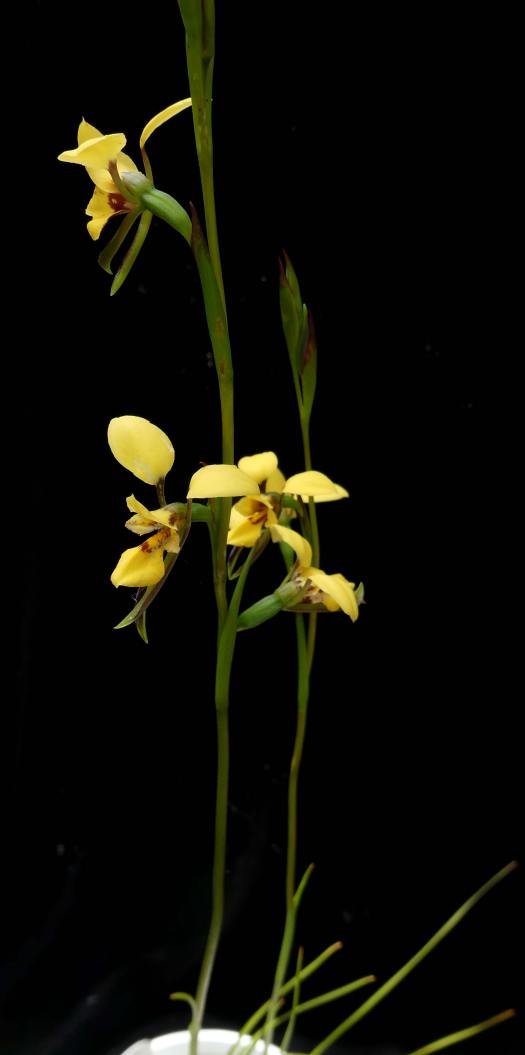 |
Dryadella zebrinaThis cute miniature Pleurothallid produces a profusion of flowers. I grow it shady and damp. It's important to check the little ones that don't have dramatic colors, to not miss the show. |
|
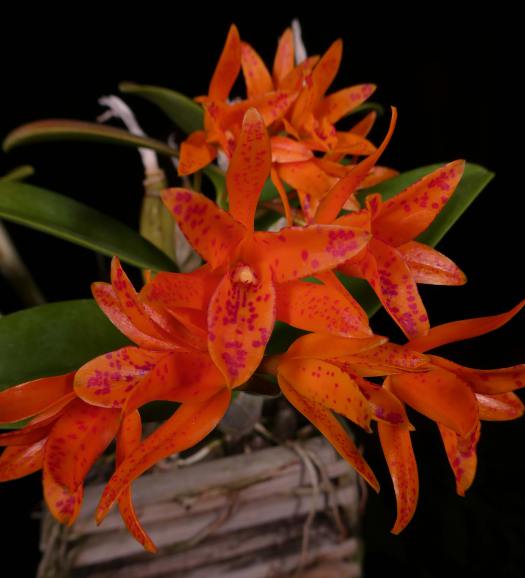
Guarianthe (Cattleya) aurantiaca 'Orange Spots x self'And here is my spottted Gur. aurantiaca. |
|
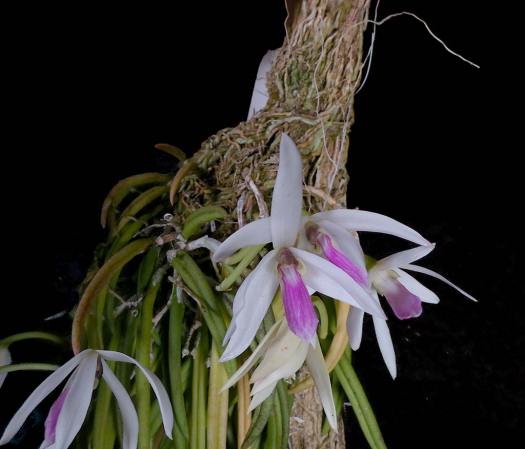 |
|
Leptotes bicolorA miniature plant with 1.5 inch flowers. Some people grow them in pots but I have had poor success that way. This one is mounted with just a little sphagnum that got it started, but now roots pretty much cover the stick. |
|
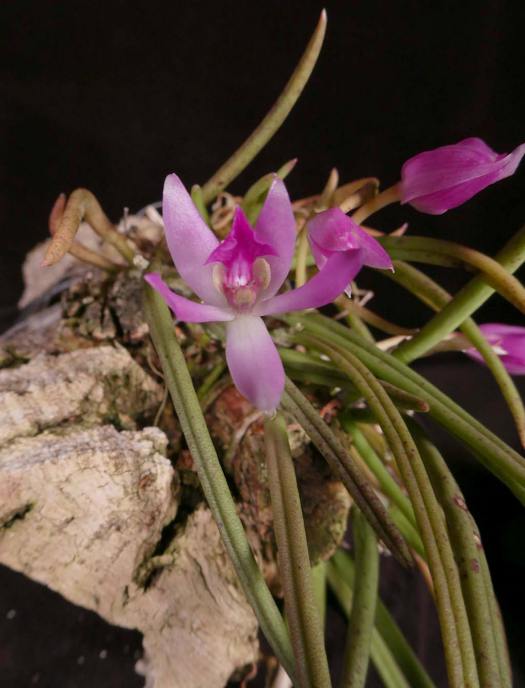
Leptotes pohlitinocoiIt's defnitely Leptotes time... All grow under the same conditions - bright morning light, mounted so that they dry quickly. |
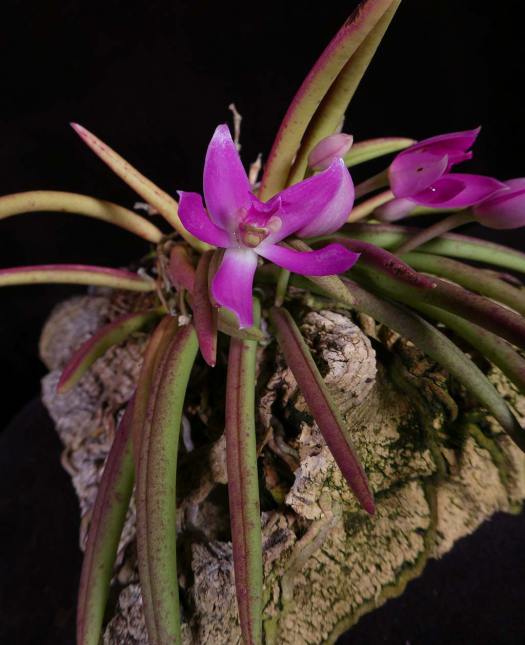
Leptotes unicolorAnd yet another cute Brazilian. |
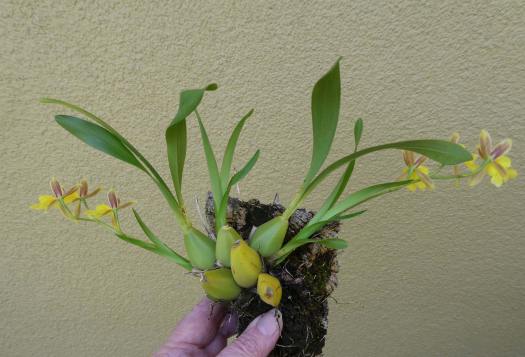
Mexicoa ghiesbreghtiana (Oncidium ghiesbreghtianum)This is growing for me also. It gets filtered sun/bright shade. As the genus name implies, it is native to Mexico, central and southwest. |
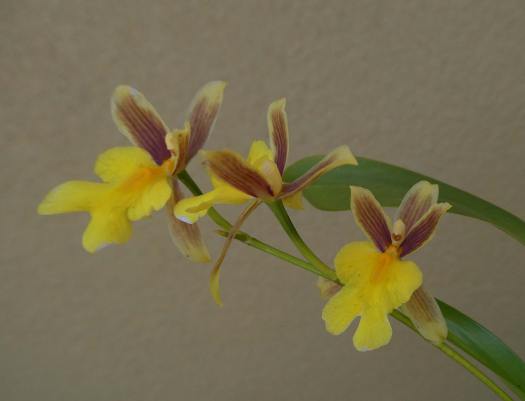 |
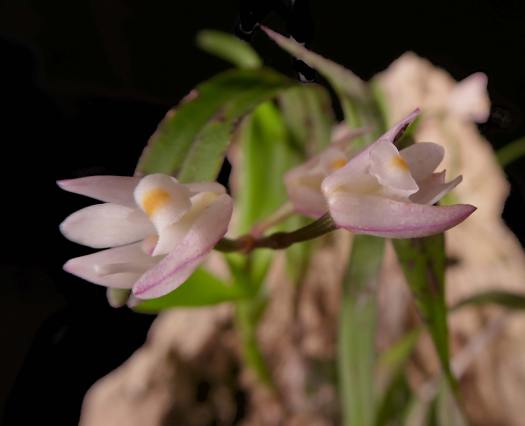
Polystachya ottonianaNative to South Africa and adjacent countries at elevations from 800 to 1600 m. Unlike many in the genus, it is very cold-tolerant. The intricate flowers are best appreciated in close-up. |
|
Coelogyne taronensisFlowers are almost as big as the plant, nearly 2 inches. Native to Yunnan province, China at elevations of 2400 to 3500 m. It has grown slowly for me - I suspect that our climate is warmer that it prefers. I have had it for more than 5 years and this is the first bloom. Last summer and fall were fairly cool, and that might have helped. |
|
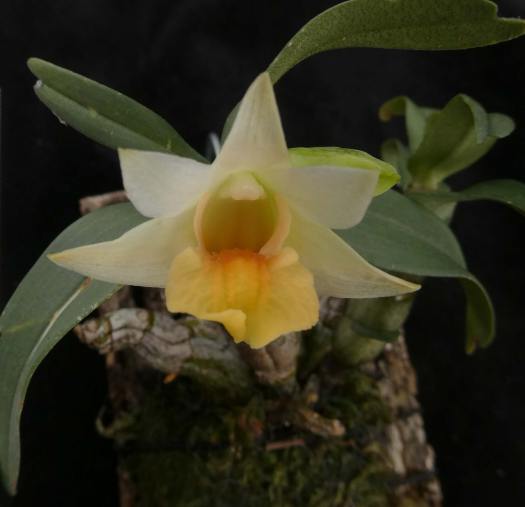
Dendrobium bellatulumFlowers about 1 inch, leaves about 2 inches. This species is from a wide area of southeast Asia, the Himalaya foothills, elevations 900-1700 m. I don't dry it out in winter, but being mounted it dries fast and cool nights facilitate blooming. |
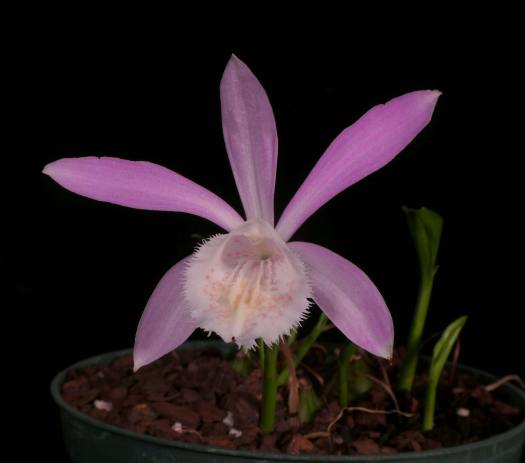
Pleione formosanumThis is the only Pleione that I have had success with - most species need a colder winter. It does go completely deciduous in winter, and I try to keep it fairly dry. The flowers emerge at the same time as the new growths. |
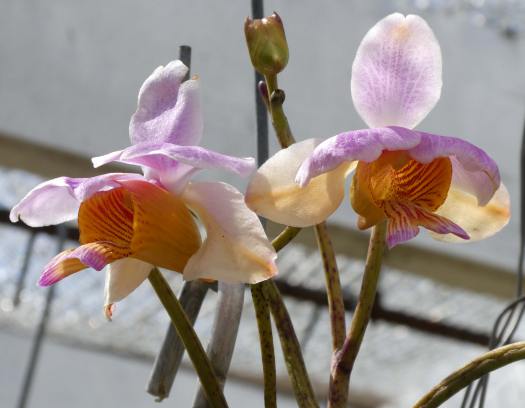 |
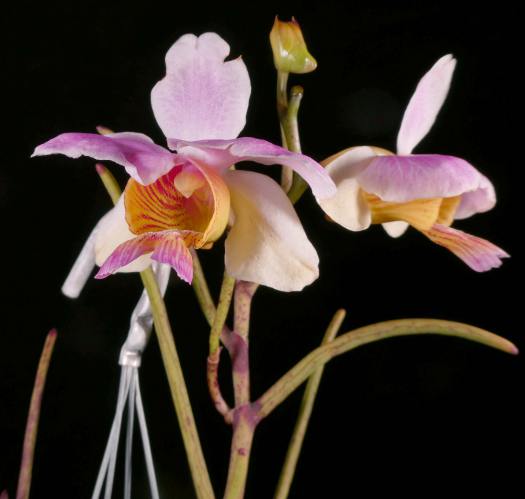 |
Papilionanthe teresThe genus was formerly referred to as "terete Vanda". Reputed to be more of a warm grower, it does fine on my patio. I got it from Cheryl DiDonna before she left for Hawaii... Thank you! |
|
Vanda barnesiiI got this as V. javierae. Shortly thereafter, there was an article in Orchid Digest describing it as a new species. There was a shipment of these, obtained by a nursery in the San Francisco Bay area (no longer in business). The two species come from the same area of Luzon Island in the Philippines, elevations of 1200-1600 m. |
|
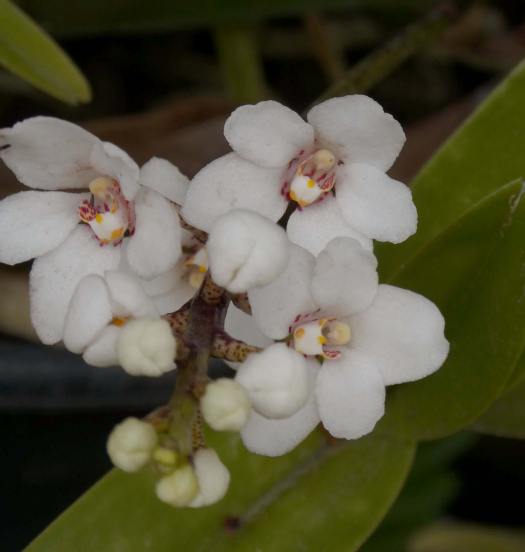 Sarcochilus hartmanniiThis is one of the "foundation" species of the great variety of Sarcochilus hybrids that are now available. I grow it in bright shade, keep it fairly damp, potted in medium-large bark. Ideally, it should be dried out somewhat in winter for better blooming. I don't particularly do that - and some plants bloom better than others. |
|
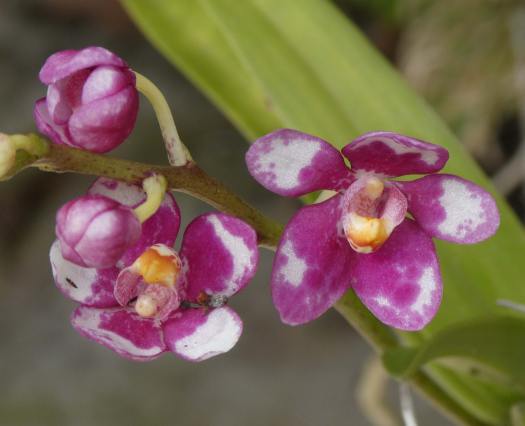 |
|
Sarcochilus fitzgeraldiiThe other "foundation" species for most of the hybrids. This one is highly variable in terms of color. The "ring" around the lip of the white ones can range from pink to orange-red, and others have varying amounts of pink. Selective breeding, with a bit of other species, gives the range of colors that one can get in hybrids. |
|
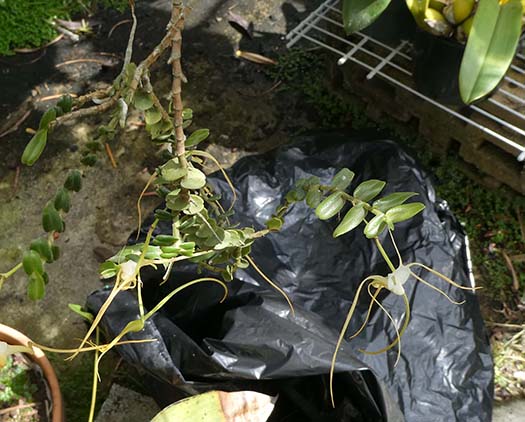
Angraecum arachnitesMy plant is rooted in a 4 inch basket, but most of the plant is hanging free, so the spidery flowers float in the breeze. I got 6 flowers in this blooming, but the most open at one time was 3. However, that just extended the bloom time since the flowers are fairly short-lived |
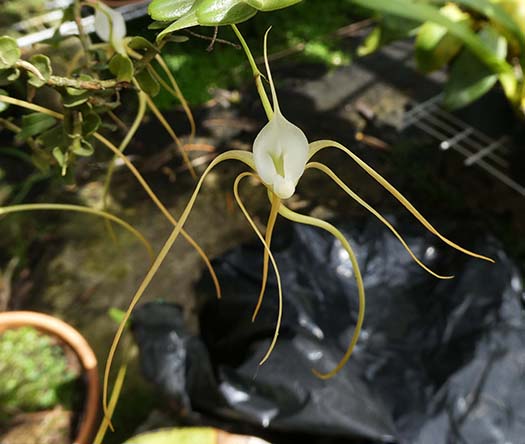 |
In the greenhouse... |
|
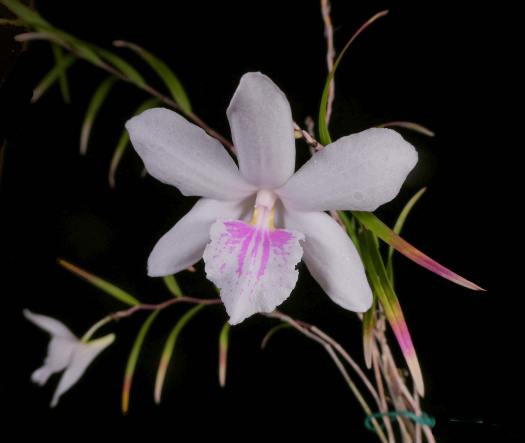 |
Dendrobium papilioI got this as a seedling, and nurtured it the greehouse. A mature plant can tolerate outdoor cold. I might move this (or not). The color pattern on the lip is particularly dramatic in this example. |
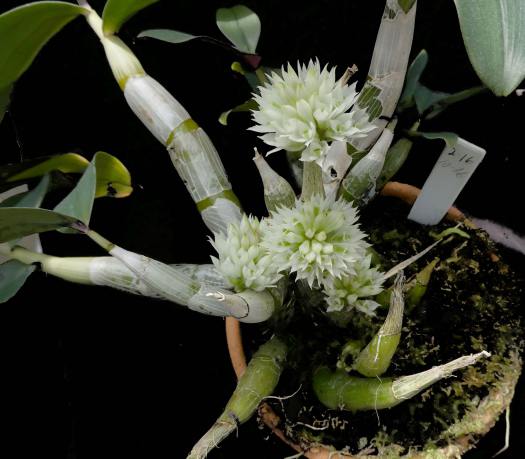
Dendrobium capituliflorumPompoms of long-lasting little flowers. |
 |
Polystachya paniculataNative to a wide area of tropical western and central Africa. The color contrast between the bright green panicle and the orange flowers is particularly dramatic.
|
|
